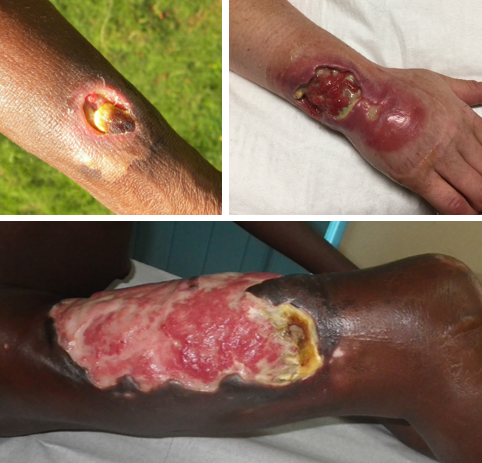 Buruli ulcer.
Buruli ulcer.Buruli ulcer is an infectious disease characterized by the development of painless open wounds. The disease largely occurs in sub-Saharan Africa and Australia, generally in rural areas near slow-moving or stagnant water. The first sign of infection is a small painless nodule or area of swelling, typically on the arms or legs. This grows larger over days to weeks, forming an open ulcer (examples pictured). Deep ulcers can cause scarring of muscles and tendons, resulting in permanent disability. The World Health Organization (WHO) recommends treating Buruli ulcer with a combination of the antibiotics rifampicin and clarithromycin. Regular cleaning and dressing of wounds aids healing and prevents secondary infections. In 2018, WHO received 2,713 reports of Buruli ulcer globally. In 1998, WHO established the Global Buruli Ulcer Initiative to coordinate global efforts to eliminate Buruli ulcer. WHO considers Buruli ulcer a neglected tropical disease.

0 comments:
Post a Comment